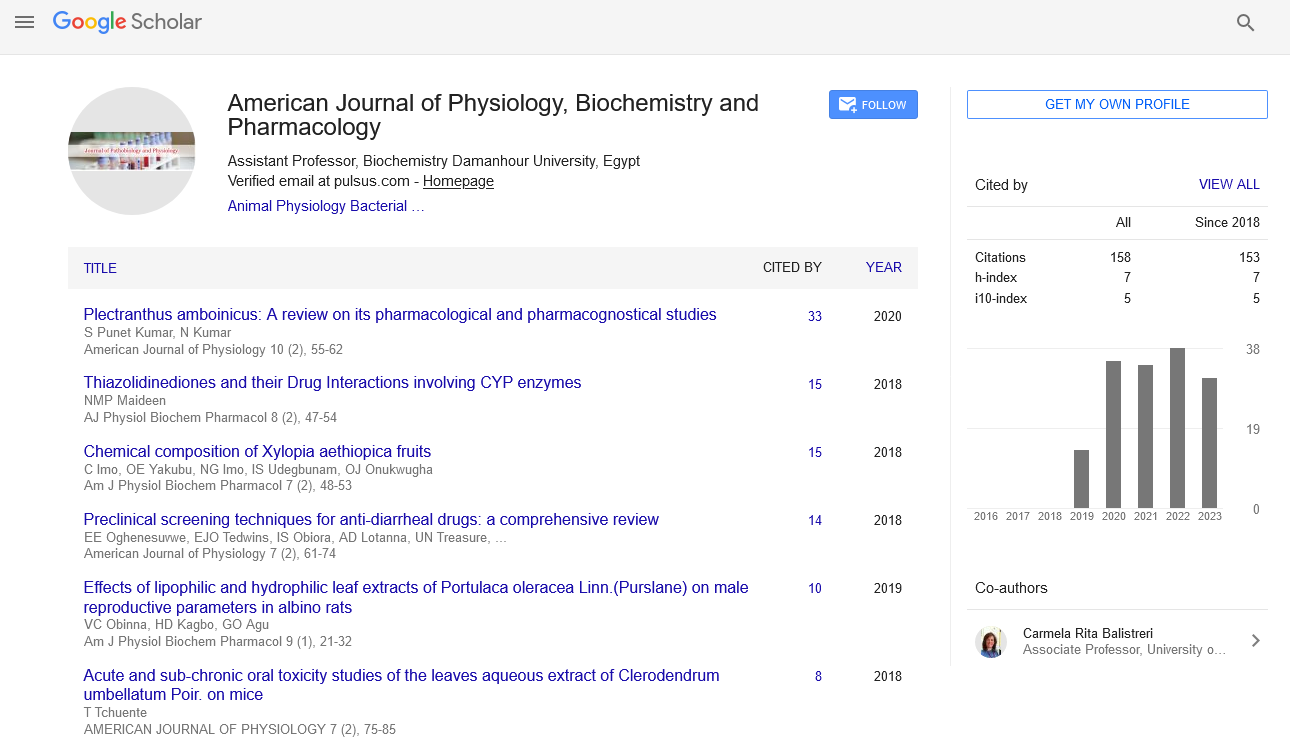Commentary - American Journal of Physiology, Biochemistry and Pharmacology (2022)
Significance of Bioanalysis in Developing Pharmaceutical Drugs
Gopal Pawar*Gopal Pawar, Department of Clinical Sciences, University of Birmingham, Birmingham, United Kingdom, Email: gopal@gmail.com
Received: 05-Jul-2022, Manuscript No. AJPBP-22-68504; Editor assigned: 08-Jul-2022, Pre QC No. AJPBP-22-68504 (PQ); Reviewed: 22-Jul-2022, QC No. AJPBP-22-68504; Revised: 29-Jul-2022, Manuscript No. AJPBP-22-68504 (R); Published: 08-Aug-2022
Description
Bioanalysis is the process of quantifying drugs in biological fluids for the purposes of defining their pharmacokinetics. To support drug discovery programmes on the metabolic fate and pharmacokinetics of substances in live cells, this approach is applied early in the drug development process. Bioanalysis deals with the quantitative evaluation of biological substances at unusual concentrations are such as drug metabolites and Xenobiotics. This is also utilised in forensic analysis, anti-doping tests in sports, forensic drug testing, and environmental issues. Bioanalysis was traditionally thought of in terms of measuring small molecule drugs.
A set of techniques used in the collection, processing, storage, and analysis of a biological matrix for a chemical component is known as a bioanalytical method. A quantitative analytical method’s suitability for biochemical applications is determined through the Bioanalytical Method Validation (BMV). The development of bioanalytical methods and assay validation allow for the accurate quantification of analytes and biomarkers in diverse biological matrices to evaluate the safety and effectiveness of drugs. Bioanalytical assay data is only reliable and repeatable if it is produced by qualified scientists utilising platforms and methodologies that have undergone rigorous validation. The interesting chances to further advance the field of bioanalysis, which is already making strides in terms of sensitivity, specificity, accuracy, efficiency, data quality, handling, analysis cost, and environmental effect. The main impact of bioanalysis in the pharmaceutical industry is to obtain a quantitative measure of the drug or its metabolites for the study of pharmacokinetics, toxicokinetics, bioequivalence and exposure-response like pharmacokinetic/ pharmacodynamic studies.
The function of bioanalysis in the development of pharmaceutical drugs is described, with an emphasis on the specific tasks carried out at each stage of the process and the various sample preparation matrices used. Bioanalytical tests play a significant role in the discovery and development of pharmaceutical products. Additionally, the methodologies used enable the quantification of analytes in a variety of biological matrices, including plasma, urine, blood, or serum. The creation of innovative treatments is aided by our growing understanding of disease processes, which is made possible by advances in bioanalytical chemistry. The recently been demonstrated in the field of neuroscience, the development of novel bioanalytical methods has made it possible for researchers to gather previously unattainable data on neuron activity and neurotransmitter release. The accurate quantification of drugs and endogenous substances in biological samples is essential for many scientific investigations. Different approaches must be used in order to design an efficient bioanalytical technique since large molecule medications differ in their physicochemical characteristics.
In the discovery stage, as well as during the preclinical and clinical stages of drug development, the necessity for reliable bioanalytical procedures is widely acknowledged and accepted. As a result, it is generally accepted that sample preparation and technique validation are necessary to show the method’s effectiveness and the accuracy of the analytical results. Bioanalytical Method Development is included in two sections; namely Sample preparation, Sample separation and Detection. In order to get a clean extract with high extraction efficiency and also sample preparation is crucial. Additionally, the range of analyte concentrations affects the detector choice.
Copyright: © 2022 The Authors. This is an open access article under the terms of the Creative Commons Attribution NonCommercial ShareAlike 4.0 (https://creativecommons.org/licenses/by-nc-sa/4.0/). This is an open access article distributed under the terms of the Creative Commons Attribution License, which permits unrestricted use, distribution, and reproduction in any medium, provided the original work is properly cited.






